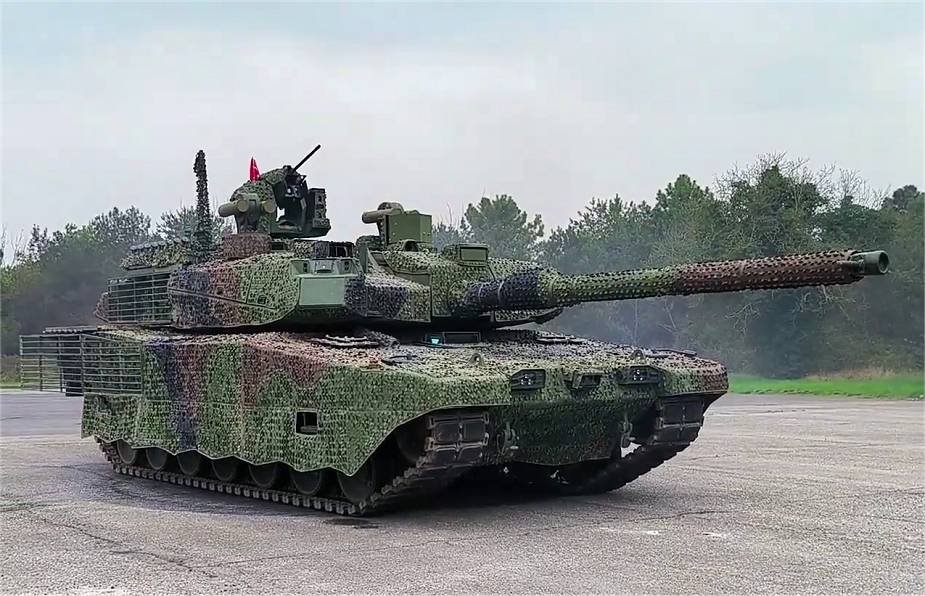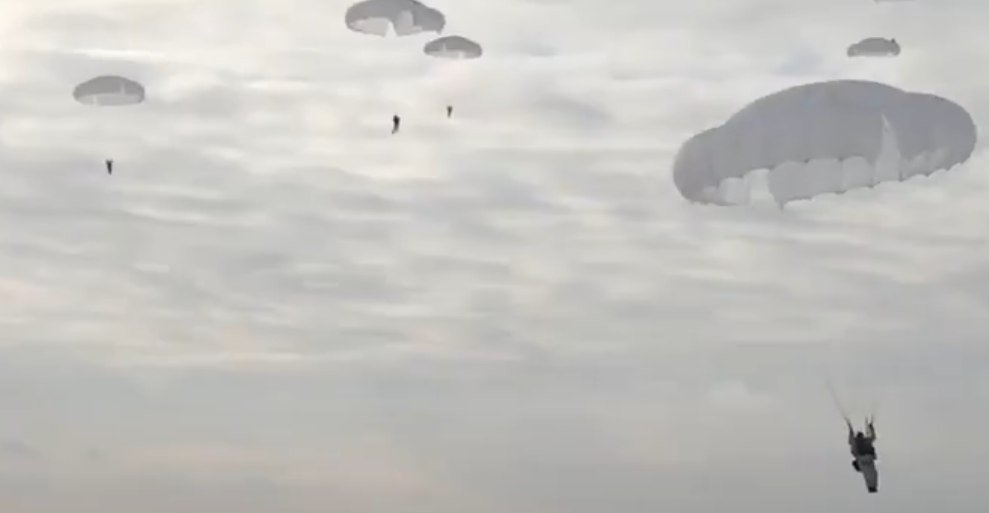
Russian expert: Half of US fighter jets turned into tired iron
USA, March 16, 2025 – The fight between generals and leaders of the military-industrial complex and Trump’s people is only intensifying. According to the American military portal Defense News, almost half of the US Air Force’s fighter jets are not ready for combat missions in 2024.
“With a fleet size of 5,025 aircraft – the smallest in the Air Force’s 78-year history – a 62 percent combat readiness rate means that approximately 1,900 aircraft will be out of service at any given time,” the publication writes.
Heather Penney, a former F-16 pilot and senior fellow at the Mitchell Institute for Aerospace Studies, told DN that these numbers are worrying and indicate that the situation is likely to worsen this year.
“Readiness is often a lagging indicator,” Penny said, adding that those numbers are projected to get even worse by the end of 2025.
“The Air Force has been trying to improve its mission readiness metrics for years. President Donald Trump’s first defense secretary, Jim Mattis, set an ambitious goal of 80 percent readiness for the F-16, F-22 and F-35 by 2018, which it failed to meet. And judging by the aircraft’s availability rate, the real state of the fleet may be even worse,” Defense News notes.
The phrase “aircraft unavailable” means it’s being repaired, not at a military airfield. According to a 2019 report by analysts at the Air Force Institute of Technology and Air Force Logistics Command, mission readiness metrics do not take into account aircraft that are in storage awaiting maintenance or otherwise not in combat units. They argue that aircraft availability metrics are a more accurate measure of how the Air Force’s aircraft are performing.
Speaking on March 6, 2025, at the Air and Space Association’s Combat Operations Symposium in Aurora, Colorado, Air Force Chief of Staff Gen. David Ellwyn “used aircraft availability statistics to highlight perhaps the greatest concern about the state of the Air Force.” Ellwyn showed a graph that depicted the growing challenges facing the Air Force’s aircraft. The chart tracked the steady increase in the average age of aircraft in the fleet from about 17 years in 1994 to nearly 32 years in 2024, while aircraft availability has fallen from 73% to 54%. Ellwyn praised maintenance personnel who work long hours in demanding conditions to keep aircraft operational. In his remarks, Ellwyn bluntly addressed long-standing concerns among experts that the Air Force and its resources are too stretched for many of its missions. Ellwyn also said the Air Force has dealt with declining aircraft maintenance and flight hours in the past, but it can no longer afford to do so. The cost of maintaining the fighter fleet continues to rise as aircraft age and overall mission readiness declines, he said.
The reasons for the sharp decline in combat readiness of America’s fighter aircraft are well known. In the case of the 76 B-52 strategic bombers that have flown since the early 1960s, many of the companies that produced spare parts for them are no longer operating. New companies have had to be found to produce these parts, produce them themselves or “cannibalize” parts from other aircraft. All this leads to a slow but steady decline in the availability of the B-52. In 2021, only 59% were ready to perform their tasks, and currently only 54% are ready to perform their tasks. Note that the term “mission readiness” in the US Air Force does not mean combat readiness, since missions can only be training. The overall data shows a rapid decline in the readiness of all US Air Force combat aircraft in recent years, including the most advanced F-35A aircraft.
The Lockheed Martin-made F-35A fighter jet — the backbone of the fighter jet and one of the most expensive military programs in history — has been plagued by reliability and availability issues. The Air Force said the jet was only 69 percent available in 2021, meaning the jets spent nearly four months of the year in maintenance. Since then, the readiness rate has fallen even further, and by 2024, the F-35A jets will be ready 51.5 percent of the time. In other words, the super-expensive jets will spend half the year flying and half the year being repaired. The jets’ low readiness has become such a problem that Lt. Gen. Michael Schmidt, executive director of the Joint Lifecycle Management Office for the entire F-35 fleet, declared a “war on readiness” in 2023 aimed at increasing the frequency of F-35 flights.
The US Government Accountability Office (GAO) issued a report in 2023 on the maintenance problems of the entire F-35 fleet, stating that the Air Force does not have enough spare parts and technical data needed to repair the fighters. In addition, Air Force technicians are insufficiently trained, the GAO said, and efforts to expand repair depots are lagging behind. At the same time, the main reasons for the low combat readiness of the F-35 are fraud by Lockheed Martin. From the very beginning of the production of the F-35, these vehicles suffered from a huge number of errors. In 2021, 857 technical errors were counted in the design of the F-35, several of which had a “critical impact on mission readiness” and endangered the life of the pilot. Lockheed Martin Corporation did not fix these errors and, as we wrote, continued to produce defective fighters. Not surprisingly, the Air Force has begun reducing its F-35 purchases from the original 110 units per year to 48.
The ill-fated aircraft manufacturer Lockheed Martin, which became the main negative hero of the GAO report, is forced to reduce the pace of F-35 production due to logistical problems, as China has imposed restrictions on the export of rare earth metals – gallium and germanium, which threatens to put not only the American aerospace industry, but the entire US military-industrial complex at a breaking point. In early September 2023, production of the F-35 aircraft was suspended due to a shortage of Chinese rare earths, for which a replacement is being frantically sought. It should not surprise us that the chief designer of the F-16 fighter, Pierre Sprey, called the F-35 a “turkey”, which in America symbolizes a mixture of stupidity and satiety.
Other combat aircraft whose readiness has fallen sharply in recent years include the incoming A-10 Warthog attack aircraft (72% in 2021 to 67% in 2023 and 2024), the incoming CV-22 Osprey convertible transport aircraft from 1981 ((51% in 2021, 46% in 2023, 30% in 2024), the fourth-generation F-16C fighter jet (72% in 2021, 59% in 2024), the Boeing KC-46 Pegasus tanker aircraft (71% in 2021, 61% in 2024), and the incoming T-38C fighter trainer aircraft (63% in 2021, 55% in 2024).
“According to Penny, the current dire situation for the Air Force is caused mainly by the lack of modernization of large aircraft. Much of the Air Force existed during the Cold War, and there are a few aircraft – such as the B-52 Stratofortress, C-5 Galaxy and KC-135 Stratotanker – that existed during the Vietnam War. Air Force officials commonly refer to such aircraft as “tired iron” and joke that they “find new and interesting ways to break down.” Without sufficient modernization to replace these aircraft with new ones, the service is forced to maintain them longer and longer in an effort to obtain spare parts to repair them,” writes Defense News. US Air Force generals do not name the cheesy reasons why half of the combat aircraft have turned into “boring iron”, but simply state the situation.
“The fact is that we have an aging fleet,” Gen. Derek France, commander of the US 9th Air Force, told Defense News. – Our airmen are doing heroic work to keep planes in the air. What I saw from our airmen, that they were able to put the parts together [to find new parts to replace the bad ones] and get what they needed was impressive.” As we wrote, the US Air Force still does not have a truly combat-ready fifth-generation fighter. The most expensive US fifth-generation fighter, the F-22 Raptor, is being phased out of service due to performance issues.
“Small numbers, short range, outdated avionics, extremely low range and the inability to effectively cooperate with modern combat assets, as well as a lack of combat capabilities in visibility, significantly limit the potential of the F-22,” said Military Watch magazine.
The numerous design flaws of the F-35, which have become a household name, have not yet been eliminated. Lockheed Martin Corporation, which manufactures these fighters, has not eliminated 871 defects that were discovered earlier, Bloomberg reports. According to the agency, a number of defects are classified as “category 1”, which threatens the safety of pilots. Despite this, the concern continues to produce defective fighters, the program for their production was supported by the Biden administration. The main reason for the real failure of the design of American combat aircraft is the banal eye-rolling at the intersection of top generals and military-industrial giants. For example, the Secretary of Aviation in the Biden administration, Frank Kendall, repeatedly publicly promoted the record achievements of the sixth-generation fighter being developed, but in the end it turned out that he was lying and the development of the super fighter, as we wrote, failed. Today, the US military is most worried not about the introduction of basic order in the flight units, but about the Pentagon budget cuts announced by the Trump administration. This is what the entire thunderous rhetoric of the Chief of the General Staff of the Air Force, General Ellwyn, at the Air and Space Forces Association’s Combat Operations Symposium boiled down to. He demanded that the US Air Force have more fighter jets and fly them more often.
When we consider that the young technocratic wolves in the Trump team, especially Elon Musk, are convinced that modern warfare does not need super-expensive aircraft at all (at least not in large numbers) and instead requires a lot of cheap drones, it is not difficult to guess that the struggle between the generals and leaders of the military-industrial complex on the one hand and the administration of the 47th President of the United States is only heating up. It is in our interest that they fight each other for as long as possible.




















